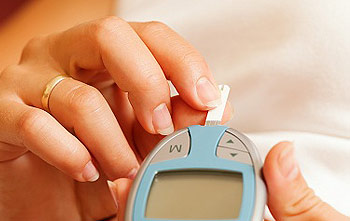
Diabetes: An Introduction
Diabetes Mellitus is a chronic disease state, in which the pancreas does not produce enough insulin, or the body does not effectively utilize the insulin being produced. The result of such events is that an increased amount of glucose remains in the bloodstream. This is known as hyperglycemia. Uncontrolled hyperglycemia can lead to numerous medical conditions, and, in extreme cases, can be life-threatening. Prompt, early treatment is the best way to control the disease process and reduce the occurrence of associated complications.
The goal of this online course is to educate all levels of providers on the chronic disease process known as diabetes, and to empower them to recognize their own personal risk factors. The program will discuss lifestyle changes, as well as overview medications available to treat diabetes. Additionally, the program will discuss medication conditions associated with diabetes, their treatment goals, and proper patient education. Finally, the program is written to enhance the practice of healthcare providers in all areas of practice, from acute care settings to long term care facilities. Specific guidelines will be outlined for the care of a diabetic patient in a variety of clinical settings.
Questions? Check out our FAQs page and How Online IV Certification Works!
Questions? Check out our FAQs page and How Online IV Certification Works!
Objectives
Upon completion of this course, you will be able to:
- Differentiate between type 1 and type 2 diabetes.
- Explain the pathogenesis of diabetes.
- Verbalize criteria used to diagnose diabetes.
- Discuss the management of diabetes.
- Identify potential complications of diabetes.
- Identify the criteria used to diagnose pre-diabetes, metabolic syndrome, diabetic ketoacidosis (DKA).
- Identify the criteria used to diagnose a hyperosmolar, hyperglycemic, nonketosis state (HHNK).
- Verbalize risk factors for the development of diabetes.
- Verbalize lifestyle changes to reduce/prevent diabetes.
- Discuss (uncontrolled) diabetic related complications.
- Explain the different types of oral hypoglycemic medication.
- Explain the different types of insulin medication.
- Verbalize the 504 plan in relationship to school aged children with diabetes.
- Discuss CMS and Joint Commission (HAC and certification).
- Explain the link between Diabetes and Viral Hepatitis in Long Term Care facilities.
Curriculum
Chapter 1: Introduction to Diabetes
- Anatomy and physiology of diabetes
- Pathology and pathogenesis of diabetes
- Pre-diabetes definition
- A1C versus eAG
- Diabetes Prevention Program
- Metabolic Syndrome definition
- Diagnostic criteria, risk factors, prevention efforts
- Type 1 diabetes
- Beta cell destruction and lifetime insulin therapy
- Type 2 diabetes
- Lifestyle changes, risk factors, methods of prevention, and treatment options
- Gestational diabetes
- Diagnostic criteria
- Risk factors
- MODY (maturity onset of diabetes in youth)
- LADA (latent autoimmune diabetes in adults)
- Sick Day Management guidelines
- Diabetic ketoacidosis (DKA)
- Hyperosmolar, hyperglycemic nonketosis (HHNK)
- Diabetic complications: foot care
- Patient education regarding complications (risk reduction and prevention)
- Oral Diabetic Medications
- Meglitinides
- Sulfonylureas
- Dipeptidy Peptidase-4 (DPP-4) inhibitors
- Biguanides
- Thiazolidinediones
- Alpha-glucosidase inhibitors
- Injectable Medications (Excluding Insulin)
- Amylin mimetics
- Incretin mimetics (also known as GLP-1 Receptor Agonists)
- Overview of Hypoglycemia
- Insulin-types of
- Sliding scale insulin administration
- Insulin injection site rotation
- Dawn phenomena
- Somogyi effect
- School age children with diabetes & the 504 plan
- The School Bill of Rights for Children with Diabetes
- Centers for Medicare and Medicaid Services (CMS) and Joint Commission-Diabetes specific issues
- Non-reimbursement of Hospital Acquired Conditions (HAC)
- Diabetes and Viral Hepatitis in Long Term Care facilities
- Proper handling and dispensing of medications
- Proper hand washing techniques
- Proper storage of diabetic testing supplies
- California Bill 241
- Implicit Bias in Healthcare
- What is Implicit Bias?
- Implications of Implicit Bias in Healthcare
- How to Reduce Implicit Bias
Price: $42.00
Contact Hours: 3.5

Course Author

Maureen Sullivan-Tevault
Maureen graduated nursing school in 1981 and has spent her years in the Emergency and Trauma field, including nursing positions as the Emergency Department Manager, Director of Staff Education, Trauma Coordinator, Cardiology Nurse Navigator, and Stroke Program Manager.
Read Full BioCourse Accreditation
See our Accreditation Statements page to view our accreditation information.